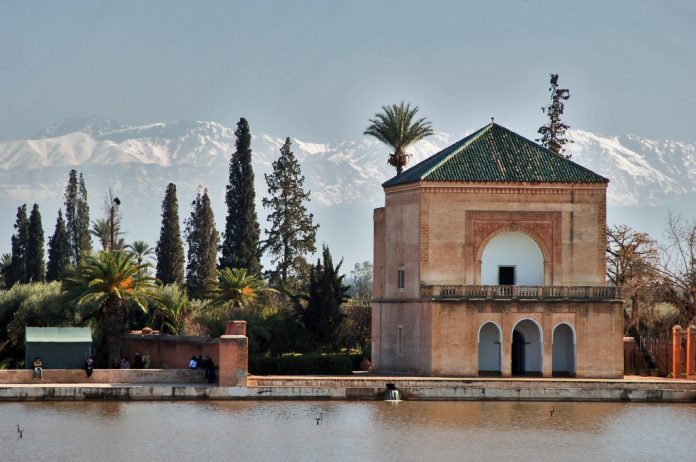
The official mention of water resources in terms of adaptation in the Outcomes document of the COP22 meeting and the realisation that the implementation of the Paris agreement will fall on a broad range of stakeholders, means that water is now recognised by climate leaders as an important part of the solution
By John Matthews*
In 2008, I was talking to a senior European manager who ran a large government water agency. Setting aside personal concerns, he asked, as a technical professional: “Why should I care about global climate policies?”
Back then I didn’t have a good answer for him. I do now. Buckle up, water professionals. Even if you care little about abstract emissions policies, the global climate community cares passionately about you.
For decades, the two estranged sectors spoke past each other in jargon, setting different priorities while competing for finite funds, authority and attention. Now, a confluence has begun. 2017 is rapidly and fundamentally re-shaping climate’s financial, operational, and investment relationships with water.
The biggest sign of this new camaraderie came in December 2016. Following the COP22 in Marrakesh, the UN Framework Convention on Climate Change (UNFCCC) posted a five-page report on freshwater and its connection to global climate policy.
Climate gurus did not impose their report on “water people”. To the contrary, it represents the fruition of years of effort by the water community, first to unify, then to redefine its relationship to climate policy, and finally to engage the UNFCCC in a productive dialogue about joint concerns and common causes.
Led in recent months by French and Moroccan delegations, many representatives from dozens of organisations–civil society, UN agencies, development banks, think tanks and national governments–converged at a UNFCCC climate conference in Rabat, Morocco for a dialogue asking how water can support climate policy and, notably, vice-versa.

The so-called Outcomes Document, itself a negotiated process, synthesised that dialogue. It outlines specific ideas and actions that more closely intertwine climate and water communities. Beyond an itemised list of propositions is the sense of how the climate and water landscapes seem to be evolving jointly, merging together and coalescing around three big themes.
First, global climate policy is more than just carbon; it’s also about water.
To readers of The Source, this may seem obvious, but until recently UN climate discussions focused almost exclusively on mitigation: to slow the rate of warming by reducing greenhouse gas emissions. By necessity, that meant discussions revolved around the largest economies and polluters. The 2015 Paris Agreement, ratified in November 2016 and now in force, shifted priorities from high-level negotiations to staff-level implementation.
As a result, climate policy’s stepchild–adaptation, or how we absorb global warming shocks–moved centre stage. “First and foremost,” the Outcomes Document agrees, “climate change impacts water resources”. Since water is the primary medium through which people, economies and nature suffer climate impacts, its effective management should be an early focus for adaptation. Long denigrated as “part of the problem” water is now recognised by climate leaders as an important part of the solution.
Second, national climate goals will be carried out by non-national actors.
Until a year ago, national governments, and their foreign ministries, dominated climate policy and negotiations. After Paris, the pivot point for action has been quietly, rapidly shifting. Nation- states recognise that most of their country’s commitments must be implemented by cities, utilities, businesses, and civil society, or by domestic agencies involved in agriculture, infrastructure and natural resources.
For water professionals, this means your institutional targets and departmental goals may feel a gravitational alignment with national climate commitments. Likewise, many otherwise isolated institutions– such as energy, irrigation, or urban development–will coordinate across projects to rationalise water supplies across water projects for both mitigation and adaptation.
Why undertake such collaboration? Answer: constrained budgets.
Hence our third theme–finance is becoming the means of creating coherent multi-scale climate policy.

The shift from global policy to sub-national action is essentially a shift from goals to projects. In many ways, climate policy will now look like climate finance, drawing on many diverse sources of funds. Multilateral lending groups, such as the World Bank, are well advanced in the public sector process. Water-related investments now must go through a climate risk-screening approach, scaling various options through a decision tree framework.
Last year’s explosion of so-called climate or green bonds–nearly doubling from US$42 to 81 billion–follows a similar trajectory for private sector finance mechanisms. Some due diligence and risk advisors apply “resilience” criteria to evaluate water investments–particularly for water utilities. Climate finance institutions now include sub-national projects as expressions of national policies, and much of the climate/green bond growth is occurring in China alone.
Together, these patterns suggest that climate change has evolved from an abstract issue into a specific set of actions, engaging with water institutions and water professionals previously outside of climate discussions. While the shift is welcome, it carries risks as core questions remain.
For starters, should we prioritise water for mitigation or adaptation? Allocations for clean energy–to turn hydropower turbines or irrigate biofuels–may reduce our capacity to absorb risks of drought and floods.
Who makes the tradeoffs? Moreover, have we really reached consensus about what resilient water resources management looks like? Can water institutions design and operate climate-robust management practices?
Such issues have been absent from climate finance and climate policy discussions because water professionals have ourselves been missing from these meetings. Now charged with making the national promises of climate real, 2017 is our time to engage.







